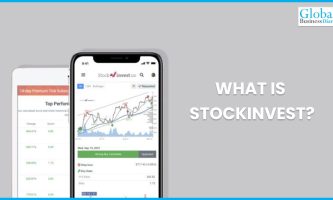Stakeholder Vs Shareholder: Differences, Functions, Importance, And More

Stakeholder vs shareholder: What is the difference? – You will come across both these terms in the world of investing. There are stakeholders and shareholders in a corporation. While their names might look similar, their functions within a company are not. All shareholders of a company are its stakeholders, while all stakeholders are not necessarily shareholders. Shareholders own stock, while all stakeholders do not own stock.
In this article, you will learn about the differences between shareholders and stakeholders. However, before that, we will give you a general overview of both these terms and their significance in the context of investing. Apart from that, we will also discuss the importance of both these roles in a business, as well as the major functions that these roles require. Hence, to learn more, read on through to the end of the article.
Stakeholder Vs Shareholder: A General Overview
According to Investopedia,
“A stakeholder is a party that has an interest in a company and can either affect or be affected by the business. The primary stakeholders in a typical corporation are its investors, employees, customers, and suppliers. However, with the increasing attention on corporate social responsibility, the concept has been extended to include communities, governments, and trade associations.”
In general, stakeholders have a vested interest in a company’s performance. Stakeholders can affect or can be affected by the performance of a corporation. Stakeholders include investors, shareholders, employees, suppliers, customers, governments, trade associations, or communities. Hence, you can see that the stakeholders of a business can be both inside and outside of the organization.
On the other hand, according to Squareup.com,
“The dictionary definition of a shareholder, also known as a stockholder, is a person who holds at least one share in a company. They’re not the same as a stakeholder though – this is someone who has an interest but doesn’t necessarily hold shares. Being a shareholder confers certain rights and responsibilities such as voting rights and the right to receive dividends if the company makes a profit.”
You can see from the aforementioned definition that a shareholder owns a part of a public company through shares of stock. A shareholder is a stakeholder, but a stakeholder is not always a shareholder. A shareholder is not part of the day-to-day operations of the business, as these functions are the responsibilities of the directors, management, and employees of the company.
[N.B.: If a shareholder owns more than 50% of the stock of a corporation, then he is a majority shareholder. However, if the shareholder owns less than 50% of the stock of a corporation, he becomes a minority shareholder.]
The Importance And Functions Of Stakeholders
According to the Corporate Finance Institute,
“A stakeholder is a party that has an interest in the company’s success or failure. A stakeholder can affect or be affected by the company’s policies and objectives. Stakeholders can either be internal or external. Internal stakeholders have a direct relationship with the company either through employment, ownership, or investment.”
Stakeholders are basically those people who affect the company, or the company affects them. These people have a “stake” in the company’s success and failure. A shareholder can also be a stakeholder. However, a stakeholder is not always a shareholder. Here are some common examples of stakeholders of a company:
● The employees of the company
● Customers of the company that rely on the company’s ability to provide services
● Shareholders of the company.
● Suppliers and vendors of the company
● Community members who feel the impact of the company’s decisions
● Other promotional activities of the company, including partners in events, promotions, etc.
The Importance And Functions Of Shareholders
A shareholder is an institution, company, or individual that owns at least one share of the company. The company’s growth offers profit to the shareholders. Hence, shareholders are also stakeholders by default. The success of the business interests shareholders since they want to receive the greatest possible return on their investment. When the company performs well, the stock prices and dividends go up, which increases the value of the shareholder’s stocks.
Shareholders also have the right to exercise a vote and affect the company’s management. These people are the company’s owners and are not liable for the debts of the company, as the company is a corporation.
To have shareholders, a company or a business venture needs to become a corporation by filing articles of incorporation.
Stakeholder Vs Shareholder: Major Differences
The following are some of the key differences between a stakeholder and a shareholder:
| Stakeholder | Shareholder |
|---|---|
| They are bound to the company for the long term and are interested in the actions and success of the company. | They might not have a long-term need for the company. |
| A stakeholder can have an ownership stake in the company. | Shareholders can own a part of the company by purchasing stock. |
| The day-to-day decisions of the company impact stakeholders. The actions of the stakeholders also impact the company’s growth. | The day-to-day decisions of the company might not impact shareholders. |
Depending on their relationship with the company, shareholders and stakeholders might have competing interests. For example, shareholders might want a company to maximize its profits by keeping its wages low or using less expensive manufacturing processes. However, this is not good news for employees and the customers of the company.
Both stakeholders and shareholders are important for a corporation. However, if business ownership and management are ethical, they understand that a shareholder’s short-term profit goals might not be a good thing for the company in the long run. Hence, they resort to the Stakeholder Theory.
Wrapping
Stakeholder vs shareholder – Hope this article was helpful to make you understand the differences between these two terms. You can see from the article that all shareholders of a company are stakeholders. However, all stakeholders are not necessarily shareholders. When a company is public, shareholders own stock of the company through shares.
On the other hand, a stakeholder just wants to see the company grow and prosper in the market. Other than stock performance, a stakeholder can also have other reasons to see the company grow. In most cases, stakeholders are often part of a company for a long time. Do you have more points to add? Share them with us in the comments below.
#Disclaimer: The information provided on this blog is for educational and informational purposes only and should not be construed as financial advice. I am not a licensed financial advisor. Any investment decision you make is at your own risk, and you should consult with a qualified financial advisor before making any investment decisions. This site may contain affiliate links, and I may earn a commission at no additional cost to you.
Get High With Business Articles Let’s Check Out!!













